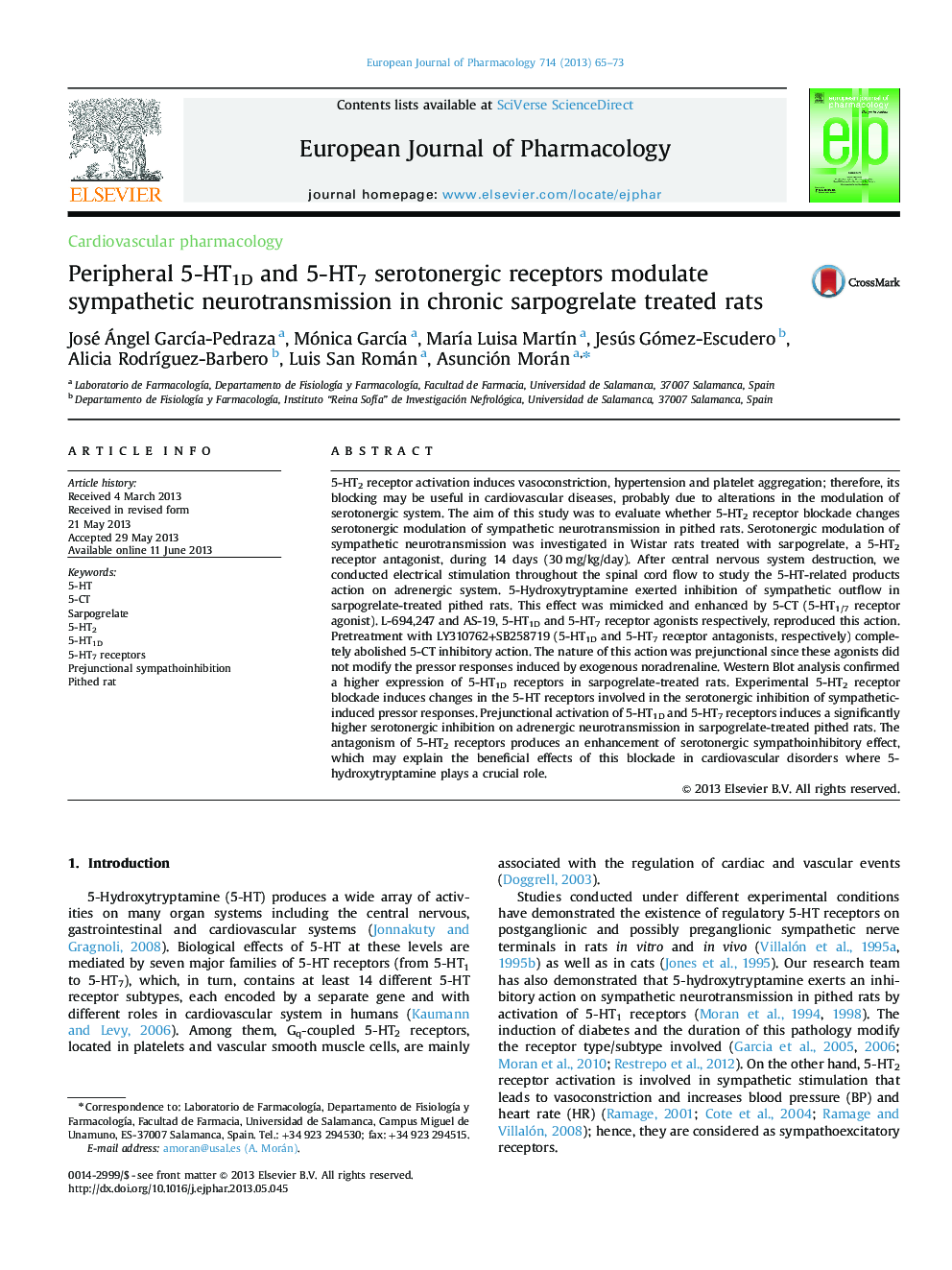| Article ID | Journal | Published Year | Pages | File Type |
|---|---|---|---|---|
| 5828578 | European Journal of Pharmacology | 2013 | 9 Pages |
Abstract
5-HT2 receptor activation induces vasoconstriction, hypertension and platelet aggregation; therefore, its blocking may be useful in cardiovascular diseases, probably due to alterations in the modulation of serotonergic system. The aim of this study was to evaluate whether 5-HT2 receptor blockade changes serotonergic modulation of sympathetic neurotransmission in pithed rats. Serotonergic modulation of sympathetic neurotransmission was investigated in Wistar rats treated with sarpogrelate, a 5-HT2 receptor antagonist, during 14 days (30Â mg/kg/day). After central nervous system destruction, we conducted electrical stimulation throughout the spinal cord flow to study the 5-HT-related products action on adrenergic system. 5-Hydroxytryptamine exerted inhibition of sympathetic outflow in sarpogrelate-treated pithed rats. This effect was mimicked and enhanced by 5-CT (5-HT1/7 receptor agonist). L-694,247 and AS-19, 5-HT1D and 5-HT7 receptor agonists respectively, reproduced this action. Pretreatment with LY310762+SB258719 (5-HT1D and 5-HT7 receptor antagonists, respectively) completely abolished 5-CT inhibitory action. The nature of this action was prejunctional since these agonists did not modify the pressor responses induced by exogenous noradrenaline. Western Blot analysis confirmed a higher expression of 5-HT1D receptors in sarpogrelate-treated rats. Experimental 5-HT2 receptor blockade induces changes in the 5-HT receptors involved in the serotonergic inhibition of sympathetic-induced pressor responses. Prejunctional activation of 5-HT1D and 5-HT7 receptors induces a significantly higher serotonergic inhibition on adrenergic neurotransmission in sarpogrelate-treated pithed rats. The antagonism of 5-HT2 receptors produces an enhancement of serotonergic sympathoinhibitory effect, which may explain the beneficial effects of this blockade in cardiovascular disorders where 5-hydroxytryptamine plays a crucial role.
Related Topics
Life Sciences
Neuroscience
Cellular and Molecular Neuroscience
Authors
José Ángel GarcÃa-Pedraza, Mónica GarcÃa, MarÃa Luisa MartÃn, Jesús Gómez-Escudero, Alicia RodrÃguez-Barbero, Luis San Román, Asunción Morán,
